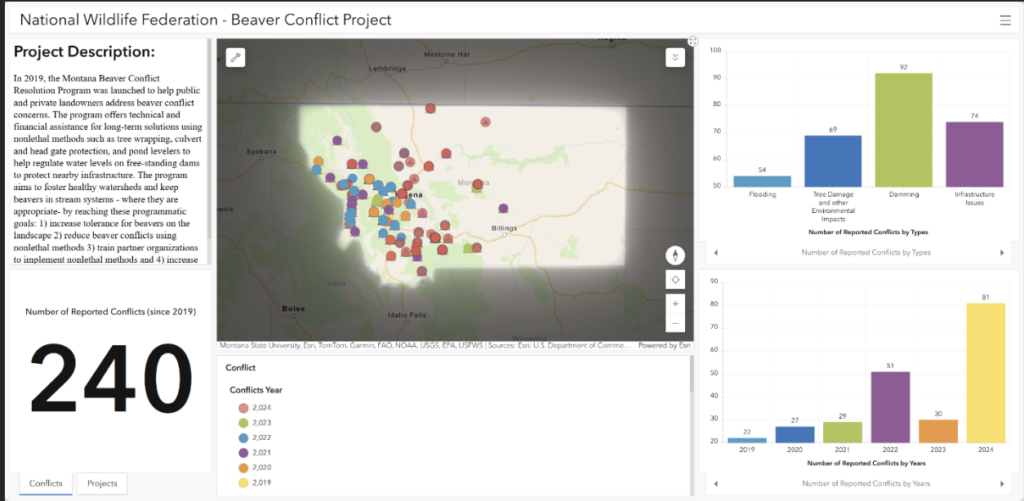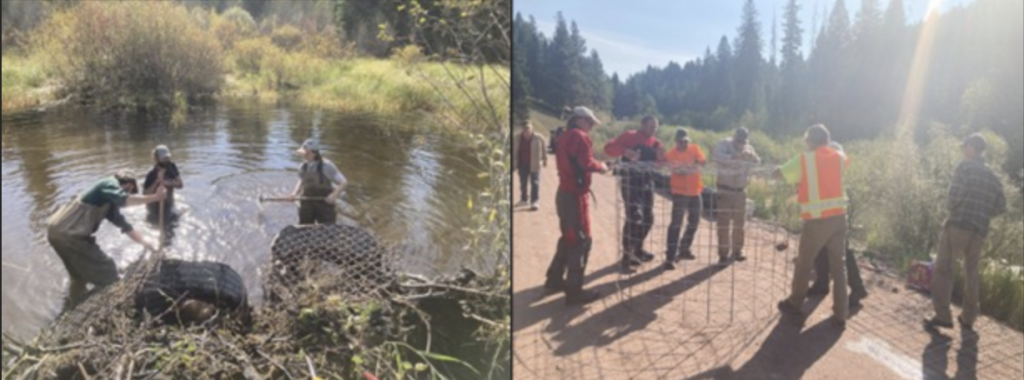As the biggest rodent on land, beavers are remarkable engineers, transforming landscapes with their dam-building expertise. These excellent hydrologists create ponds that profoundly impact annual streamflow, stream velocity and groundwater recharge (Naiman et al., 1988; Pollock et al., 2015). Beyond habitats for beavers, these ponds also stand as the central hubs for dynamic wetland ecosystems.
Yet, ecological engineering often conflicts with human interests. Expanding urbanization, agriculture, and infrastructure development intensify these tensions, as beaver dams are nuisances at flooding roads, damaging crops, and blocking fish passage (Johnson et al., 2006; Brazier et al., 2021). Historically, human response to beaver conflicts has been dominated by trapping and lethal removal, leading to widespread population declines. However, as our understanding of beavers’ ecological benefits grows, so does our commitment to finding non-lethal coexistence strategies – the main objective of these strategies is promoting coexistence and some popular methods including pond levelers, fencing, painting with sand, and culvert-protecting Beaver Deceivers (Goldfarb, 2018). Since 2019, our partner – the Beaver Conflict Resolution Program (BCRP) at the National Wildlife Federation (NWF) – has worked tirelessly to implement these strategies across Montana. Acting as a critical bridge between beaver conservation and human interests, BCRP provides on-site assistance to landowners, demonstrating that coexistence with beavers is not only possible but beneficial to watershed health.
Over the past year, I have had the incredible chance to collaborate with the dedicated staff from BCRP, learning from their past efforts and their ambitions for future work. In this project, we created new surveys for field workers to achieve systematic data collection and explore the possibilities of embedding media files like photos. Another rewarding aspect has been working with ESRI tools and spatial analysis to track beaver conflicts, visualize hotspots, to help inform decision-making. By integrating geospatial data with field records, we have developed an interactive dashboard that enables land managers to monitor and review previous conflicts and projects, evaluate successful mitigation techniques, and foster data-driven conservation planning. The external version is a public-facing tool designed to enhance awareness and engagement with beaver conflict resolution efforts. It allows users to explore where beaver conflicts are occurring, what mitigation strategies have been implemented, and how these interventions are supporting coexistence. By making this data accessible and easy to understand, we hope this dashboard helps educate the public on the ecological role of beavers while demonstrating the effectiveness of non-lethal management strategies.

As the journey toward coexistence continues, I hope that we can invest more resources into science-driven solutions and commitments to sustainable land management to create a bright future where wildlife and people thrive together on the land.

References
Brazier, R. E., Puttock, A., Graham, H. A., Auster, R. E., Davies, K. H., & Brown, C. (2021). Beaver:
Nature’s ecosystem engineers. Water, 8(1), e1494. https://doi.org/10.1002/wat2.1494
Goldfarb, B. (2018). Eager: the surprising, secret life of beavers and why they matter / Ben
Goldfarb; foreword by Dan Flores. Chelsea Green Publishing.
Jonker, S. A., Muth, R. M., Organ, J. F., Zwick, R. R., & Siemer, W. F. (2006). Experiences with beaver
damage and attitudes of Massachusetts residents toward beaver. Wildlife Society Bulletin, 34(4), 1009–1021. https://doi.org/10.2193/0091-7648(2006)34[1009:EWBDAA]2.0.CO;2
Naiman, R. J., Johnston, C. A., & Kelley, J. C. (1988). Alteration of North American Streams by
Beaver. BioScience, 38(11), 753–762. https://doi.org/10.2307/1310784
Pollock, M.M., G. Lewallen, K. Woodruff, C.E. Jordan and J.M. Castro (Editors) (2015). The Beaver
Restoration Guidebook: Working with Beaver to Restore Streams, Wetlands, and Floodplains. Version 1.02. United States Fish and Wildlife Service, Portland, Oregon. 189 pp. Online at: http://www.fws.gov/oregonfwo/ToolsForLan
STUDENT RESEARCHER

Xiaofan Shen – Research Assistant | Xiaofan Shen is a Master of Environmental Science candidate at the Yale School of the Environment, specializing in urban heat islands, urban planning, and urban ecology. Before YSE, She earned her bachelor’s degree in Urban Forestry from the University of British Columbia, where she cultivated a deep interest in urban resilience and human-wildlife conflicts. Xiaofan’s research focuses on applying geospatial analysis and remote sensing to tackle environmental challenges in urban areas. She is passionate about using data-driven solutions to create sustainable and inclusive cities. In her free time, Xiaofan enjoys playing musical instruments, swimming, and cooking with friends. See what Xiaofan has been up to. | Blog
